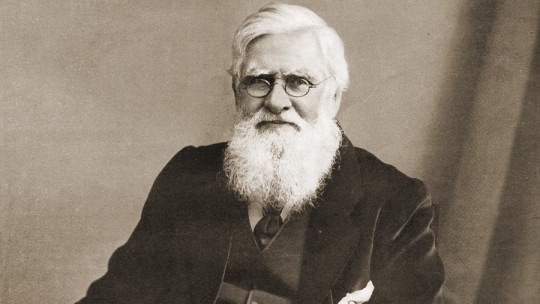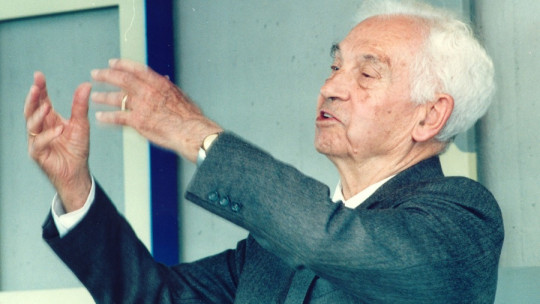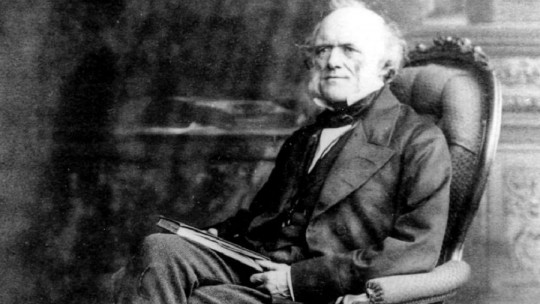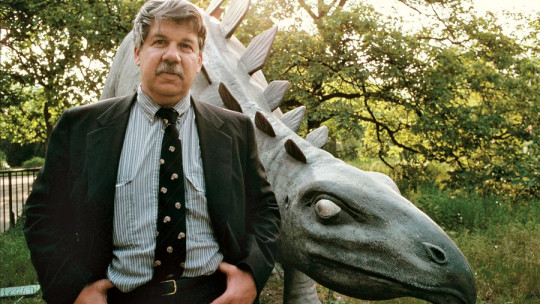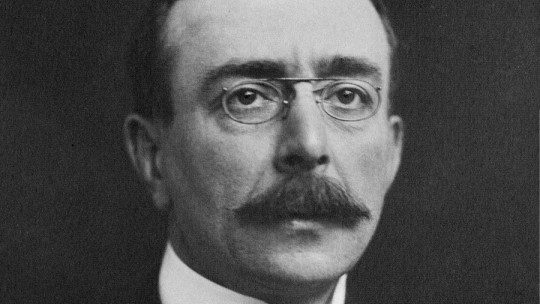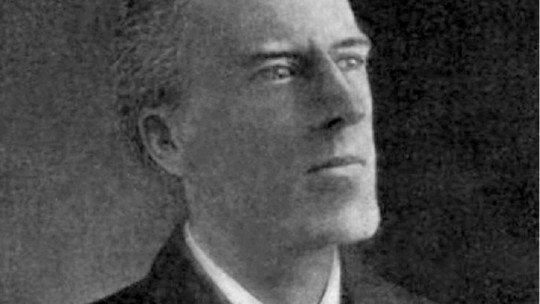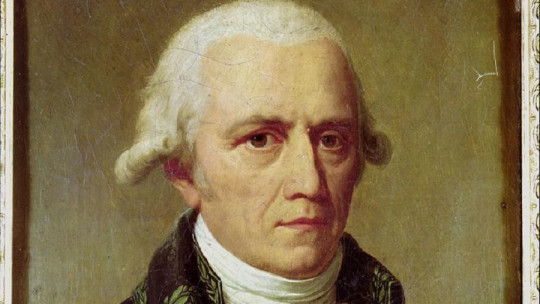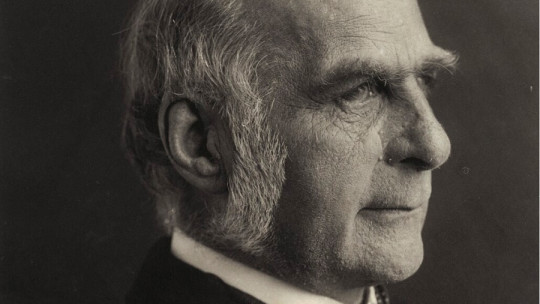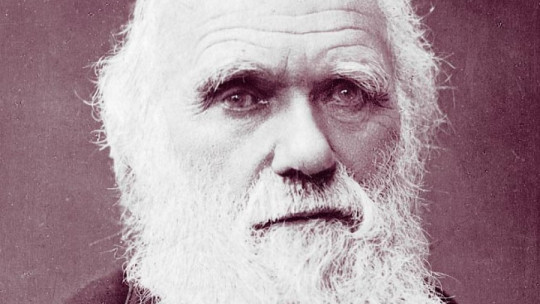
The name of Charles Darwin is not only known, but is part of popular culture. His vision of how species have changed throughout their natural history represented a true scientific revolution, on par with the Copernican revolution.
Born and raised in England, Darwin, whether in his earliest childhood or in his university years, would never have thought that, despite having studied ecclesiastical studies, he would manage to make enemies of fervent believers.
The life of the English naturalist is long and interesting. Let us embark, as he did on board the Beagle, on this journey about his personal history through a biography of charles darwin with the main milestones of his career.
Brief biography of Charles Darwin
The long life of Charles Darwin, a member of an influential family of doctors and cousin of the ideator of eugenics, Francis Galton, is rich in fascinating events, which led him to postulate about natural selection and the origin of species.
Ultimately, Charles Darwin’s life is one of the most interesting in the history of science. This is a deeply religious man who traveled around much of the planet to document new species and ended up making discoveries that would give way to Biology as we know it, and dealing a hard blow against several of the dogmas held at that time by the Christianity. Let’s look at his biography.
Early years
Charles Robert Darwin was born in Sherewsbury, England, on February 12, 1809 Medicine and the natural sciences ran in the family, since his father, Robert Waring Darwin, and his paternal grandfather, Erasmus Darwin, were famous for performing efficiently in that profession.
Already from his childhood, Charles Darwin showed signs of his taste for natural history, which he demonstrated through his great love for collecting things such as shells and minerals. His soul as a systematic naturalist was visible.
In 1825 Darwin He entered the University of Edinburgh where, due to parental pressure, he would begin his studies in medicine in order to continue the family lineage of outstanding doctors, however, Darwin was already showing signs that this was not going for him.
From the background to the Bible
Not only was his lack of interest in medicine evident, but also his lack of vocation. When young Charles had to undergo a surgical operation, he could not bear it. They were a truly traumatic event for him. That is why Darwin, at that time, He began to convince himself that he could live off his father’s inheritance who could have a comfortable life without needing to practice the medical profession.
Obviously, this clashed with the plans of his father Robert, who was not going to allow his son to become a freeloader. For this reason, and after having passed two medical courses, he suggested that his son pursue ecclesiastical studies.
So that, Charles Darwin began his ecclesiastical studies at Christ’s College, Cambridge in 1828 Although it may seem ironic, Darwin began his new career with pleasure, even though several years later his findings on how living beings change were a real scandal and even a sign of heresy.
Although training as a rural clergyman attracted his attention a little more than being a doctor, his interest in studying was rather limited. Darwin preferred to dedicate himself to hunting and horseback riding and, as time went by, he developed a love for painting and music.
But, although little interested in the studies he was forced to undertake, Darwin He did not miss the opportunity to voluntarily attend the botany classes of the Reverend John Henslow, a fact that represented a true scientific opportunity for young Charles. Henslow would become an extremely important figure in Darwin’s life.
Upon completing his studies at Christ’s College in 1831, on Henslow’s recommendation, Darwin delved into geology. At that time he would meet Adam Sedgwick, founder of the Cambrian system Darwin would accompany Sedgwick on an expedition to North Wales.
But not only did Henslow help Darwin set the course for the expedition in Wales. It would be this reverend who would provide him with the opportunity to embark as a naturalist aboard the Beagle, along with Captain Robert Fitzroy.
Darwin’s father flatly refused to allow his son to go around the world. He considered the idea to be very crazy, and that he would only allow it if someone with common sense agreed to him boarding the ship. That someone was Darwin’s uncle, Josiah Wedgwood, who, over the years, would become his father-in-law.
Trip on the Beagle
December 27, 1831 would be the key date that would mark the beginning of Darwin’s scientific life. It was that day when The Beagle sailed from Davenport Harbor with young Charles on board
A curious fact about all this is that Darwin came very close to not being able to travel in it, not because he did not want to, but because Captain Fitzroy, who was a supporter of physiognomic theories postulated by the Swiss priest Johann Caspar Lavater, estimated that the nose Darwin did not reveal the energy or determination to undertake such a journey.
The objective of the trip, beyond Darwin’s desire to see all kinds of exotic species, was to complete a topographical study of the territories of Patagonia and Tierra del Fuego, in addition to tracing the coasts of Chile, Peru and Pacific islands. The trip lasted almost five years and took Darwin to see the coasts of South America, the Galapagos Islands, Tahiti, Oceania and South Africa.
The study of geology was the most important factor why Darwin had embarked on such a feat, although he also liked to collect some birds and other animals that he hunted while on islands in the New World.
While traveling, Darwin would be the author of several scientific achievements, including a theory on the formation of coral reefs, in addition to geologically structuring some islands, such as Saint Helena.
It was also during this trip that Darwin would see, while in the Galapagos Islands, that its flora and fauna resembled that of South America, but, at the same time, The specimens of what seemed to be the same species changed from island to island
This led Darwin to think that the traditional theory that species did not change, that they were stable and unchangeable, was something that could be criticized. It was clear that what he had seen were related animals but that, due to environmental factors, they had changed to be able to continue living in a specific environment.
Return to England
Charles Darwin would return to his native England on October 2, 1836. The trip, for better or worse, had left its mark on him. His knowledge of nature had increased, but he also suffered from health problems probably caused by the bite of a tropical mosquito, symptoms of Chagas disease.
However, despite his frequent indispositions due to his delicate health, from his arrival until 1839 Darwin was very active. He worked on writing his travel diary, which would be published in 1839, and would produce two other texts in which he would present his observations in geology and zoology.
He settled in London in 1837 and there he acted as honorary secretary of the Geological Society, making contact with Charles Lyell, author of a book on geology that had been very useful to him while he was on board the Beagle, “Principles of Geology.”
While in the British capital I would begin to reflect on how species change, how they “transmute.” Based on what was seen in the Galapagos, it was clear that, at some point in natural history, animals such as finches, due to environmental influence and adaptation to the environment, had changed their anatomy. The question was how.
He knew how to relate this to domestic breeding. Since time immemorial, farmers had been selecting the most useful varieties of plants, crossing them with each other to ensure that the next generation gave them maximum benefit. This artificial selection could be extrapolated to nature, and would give way to the concept of natural selection.
While artificial selection followed human criteria, largely based on how beneficial one cross or another is, natural selection, according to Darwin, would imply that those individuals better adapted to the environment, understood as “stronger”, would survive and reproduce while the most disadvantaged would perish before having offspring.
Based on this mechanism, a species could be radically changed, causing the best-adapted individuals to interbreed with each other while those that simply had not had such good luck failed to contribute a new generation.
Although this idea was truly brilliant, Darwin himself was aware that the simple fact of doubting that the species that inhabited the face of the earth had all been created independently, and that they had never changed, It was something that in the United Kingdom of its time would be seen as a heretical act
That is why he chose not to write on the subject for a while, although, finally, in 1842 he would dare to record his reflections in a summary and, later, he would expand it with a document of nearly 230 pages, written in 1844.
Although his scientific life was more than remarkable, it was not only his professional achievements that stood out during this time. On January 29, 1839 he married his cousin Emma Wedgwood. After marrying, he continued to reside in London until the end of 1842, moving to Down, in the county of Kent, trying to have a quieter life appropriate for his delicate state of health.
On December 27, 1839, Darwin’s first child was born and the English naturalist did not miss the opportunity to experiment with his own offspring. He began a series of observations on the expression of emotions in humans and animals
Apart from this first child, the Darwin-Wedgwood couple had nine more children, six boys and four girls in total. At Down he completed the writing of works addressing geology, but also wrote a new edition of his travel diary.
The theory of evolution. Popularity and opposition
In 1856, Charles Lyell advised Darwin to work fully on developing his ideas about the evolution of species. This work, which he was sure was going to bring him greater fame and popularity, seemed to have an unexpected end when he received a manuscript in 1858 in which a certain Alfred Russel Wallace, who had traveled to the Moluccas Islands, said he shared the same views
Darwin felt widely identified with the figure of Wallace, especially when Wallace told him how he had come to the conclusion that species changed through survival and by responding satisfactorily to the demands of the environment.
Although they both shared essentially the same theory, Darwin did not know how to proceed with the publication of his work, a concern he shared with Lyell. Darwin, despite being the first to conceive the idea, did not want to appear to be a usurper of Wallace’s rights.
The incident was resolved amicably thanks to the intervention of Lyell and the botanist Joseph Dalton Hooker. Darwin He followed their advice, and summarized his manuscript, presented on July 1, 1858, to the Linnean Society, along with Wallace’s work
The origin of species and recent years
After the incident, Darwin saw it necessary to stop hesitation and publish his reflections as soon as possible, without the need to make summaries to shorten his notes.
It is for this reason that he finally decided to send to the printer as soon as possible the text for which he would become widely known and criticized: On the origin of species through natural selection, or the preservation of favored races in the struggle for life.
The book, which would be called The origin of species, was a real bestseller the day it was published, November 24, 1859. The first 1,250 copies were sold out in just a few hours. It is not surprising: it presented a more or less closed explanation for the existence of the variety of life forms that inhabit the planet.
The book was controversial due to its theological implications, since the idea of natural selection implied processes that, until then, were reserved for the idea of the creator God. That is why the opposition did not wait.
Religious figures, such as Bishop Samuel Wilberforce, were very harsh and critical of the evolutionary theses, which, far from intimidating Darwin, caused his supporters to give him wide support and security, among them the zoologist Thomas Henry Huxley, known as “the bulldog.” of Darwin.”
Although the criticism was directed directly at him, Darwin chose to stay away from direct intervention. However, in 1871, when publishing The origin of man and selection in relation to sex earned even more critics. In this play He presented his arguments that human beings had appeared on Earth through exclusively natural means
In 1872 he would publish The expression of emotions in man and animalsa book in which, thanks to his research with his first-born son, he used it to make a modern study of human behavior and compare it with other species.
During the last ten years of his life, Darwin put aside the controversies regarding the origin of species and preferred to dedicate himself to the world of botany, a quieter hobby than the angry debates about whether humans descended from apes or not.
At the end of 1881 he began to suffer serious heart problems, first symptoms of a heart disease that would lead to his death on April 19, 1882
The intellectual legacy of this English naturalist
It is true that despite the fact that the first book with which Darwin would make his theory known was called The Origin of Species and that in turn this work left many questions open. However, the observations and explanations of this researcher provided the foundations on which other scientists would build Biology as we understand it now.
We currently know that the evolution of species through mechanisms such as natural selection is a reality, and has even been proven by experiments. Cases of evolution have also been observed in a matter of a few decades, which is known as rapid evolution, and which occurs even in some vertebrates with a short life cycle. Thanks to these ideas, once combined with discoveries in genetics, many technical and technological solutions have been developed in Medicine, Biology and many other related disciplines.

